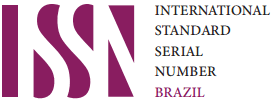Cognitive and school performance in children with attention deficit hyperactivity disorder (ADHD)
DOI:
https://doi.org/10.25118/2763-9037.2012.v2.1008Keywords:
attention, cognition, evaluation, performance evaluation, ADHDAbstract
Attention Deficit Hyperactivity Disorder is a disorder of conduct is chronic, with a very important biological substrate, not due to a single cause, has a strong genetic basis and is formed by a heterogeneous group of children. It includes children with normal intelligence, who have significant difficulties in conforming, in terms of behavior and/or learning, to the norms expected for their age. Being divided into three subtypes called as Inattentive Subtype, Hyperactive/Impulsive Subtype and Combined Subtype. The objective of this work was to characterize cognitive performance, higher cortical functions and school performance. Using the WISC III, TLN-Ce TDE as an evaluation instrument. Thirteen children were evaluated, with a mean age of 9 years, most of them male, attending elementary school in the published network in the region of Campinas. As a result, the group presents cognitive performance within the average, with better results in the factorial indices of perceptual organization and verbal comprehension. In the evaluation of cortical functions had worse performance in academic areas, pace and tactile ability. In the evaluation of school performance, he presented difficulty in writing, arithmetic and reading.
Downloads
Metrics
References
Barkley RA. Etiologias In: Barkley AR (org). Transtorno de déficit de atenção/hiperatividade: manual para diagnóstico e tratamento. Porto Alegre: Artmed,2008.
Goldstein S, Goldstein MM. Maneging atention disorders in children. a guide for practitioners. A Wiley Interscience Publication. 1990
Stubbe D E. Attention déficit/ hyperactivity disorder: over view historical perspective current controversis and future direction. Child and Psychiatric Clinic of North America 2000; 9 (3): 469-479. DOI: https://doi.org/10.1016/S1056-4993(18)30101-9
Crinella FM. Identification of brain dysfunction syndromes in children through profile analysis: patter associated with so-called “Minimal Brain Dysfunction”. J.Abnorm. Psychol 1973, 82:1. DOI: https://doi.org/10.1037/h0034964
ORGAMNUNDIIALZ DESAAÚDÇE- CÃlassOificação de Transtorno Mentais e de Comportamento da CID-10. Tradução do Original por Dorgival Caetaes. Artmed: Porto Alegre; 1995.
APA (American Psychiatric Association). Manual de diagnóstico estatística de distúrbios mentais (DSMHD, 3 ed. Washington, DC, American Psychiatric Association, 1980.
APA (American Psychiatric Association). DSM-IV TR; Manual estatístico de transtornos mentais. Porto Alegre: Artmed, 2002.
Fórster J, Fernández F. Sindrome de déficit atencional desde la perspectiva neurológica. Boletin de la Sociadad de Psiquiatria y Neurologia de la infância y de la adolescência 2003;14:52-56.
DuPaul G), Stoner G. TDAH nas escolas: estratégias de avaliação e intervenção. São Paulo: M Books; 2007.
Carlson CL, Mann M. Sluggish cognitive temp predicts a different of pattern of impairment in the attention deficit hyperactivity disorder, | predominantily inattentive type. ) Clin Child and Adol Psycholoogy 2002; 31:123-129. DOI: https://doi.org/10.1207/S15374424JCCP3101_14
Willcut EG, Pennigton BF, DeFries JC. Twin study of the comorbity between reading disabilities and attentiondeficit hyperactivity disoreder. Am ). Med Genetics 2000; 96:293-301. DOI: https://doi.org/10.1002/1096-8628(20000612)96:3<293::AID-AJMG12>3.0.CO;2-C
Simão ANP. Avaliação neuropsicológica em crianças que apresentam Transtorno de Déficit de Atenção e Hiperatividade. Campinas. [Dissertação-Mestrado] Universidade Estadual de Campinas, 2004
Freire ACC, Pondé MP. Estudo piloto da prevalência do transtorno de déficit de atenção e hiperatividade entre crianças escolares na cidade do Salvador, Bahia, Brasil. Arq Neuropsuiar 2005; 63(2B): 474-478. DOI: https://doi.org/10.1590/S0004-282X2005000300020
Figueiredo VLM. Escala de Inteligência Wechsler para Crianças. Adaptação e padronização de uma amostra brasileira. São Paulo: Casa do Psicólogo, 2002.
Stein LM. Teste de desempenho escolar: manual para aplicação e interpretação. São Paulo: Casa do Psicológo, 1994.
Ciasca SM. Distúrbios e dificuldades de aprendizagem em crianças: analise do diagnóstico interdisciplinar. [Tese - Doutorado]: Universidade Estadual de Campinas,1994.
Cunha JA. Escalas Wechsler. In: Cunha JA (Ed). Psicodiagnóstico R. Porto Alegre: Artes médicas; 1993, p. 278-354.
Ciasca SM. Distúrbios de aprendizagem: Proposta de avaliação interdisciplinar. São Paulo:Casa do Psicólogo; 2003.
Toledo MM. Comparação diagnóstica a um treino de atenção em crianças com os subtipos de transtorno e déficit de atenção/hiperatividade. Campinas. [Tese -Doutorado] Universidade Estadual de Campinas, 2006.
Kaufman AS. Factor analysisof the WISCR at 11 age levels between 6 and 16 years. ). of Cons. Clin. Psichology 1975; 43:135-147. DOI: https://doi.org/10.1037/h0076502
Bierdman J. Patterns of pschiatric comorbidity, cognition and psychosocial functioning in adults with attention deficit disorder. Am. ). Psychiatry 1993; 150(12): 1792-1798. DOI: https://doi.org/10.1176/ajp.150.12.1792
Kaufman AS, Lichtenberger EO. Essentials os WAIS-IIl assessment. New York:John Wiley e Sons 1999.
Tulsky D, Zhu ). WAIS Ill — WMS Ill: techinical manual. San Antonio: The Psychological Corporation:1997.
Seidman LJ, Doyle A, Fried R, Valera E, Crum k, Mathews |. Neuropsychological function in adults with attention-deficit/hyperactivity disorder. Psych. Clin. N. Am 2004; 27(2): 261-282. DOI: https://doi.org/10.1016/j.psc.2003.12.005
Mayers SD, Calhoum SL. WISC IV and WISC Ill profiles in children with ADHD. ). Attetion Disorders 2006; 9(3): 486-493. DOI: https://doi.org/10.1177/1087054705283616
Luria AR. Fundamentos de neuropsicologia. São Paulo:EDUSP, 1981
Ciasca SM, Capellini AS, Toledo MM, Simão ANP, Ferreira TL. Transtorno de déficit de atenção com hiperatividade. Abordagem neuropsicológica. Rev Bras Neurol 2007; 43(3): 5-10.
Faraone S, Biederman ), Krifcher Lehamnl. Intellectual performance and school failure in children with attention deficit hyperactivity disorder and their siblings. ) Abnorm Psychol 1993; 102:616-23. DOI: https://doi.org/10.1037/0021-843X.102.4.616
Schimidt KL et al. Cognitive factors differentialing attention deficit-hyperactivity disorder with and without a comorbid mood disorder. Journal of Consulting and Clinical Psychology 1998; 66(4): 673-679. DOI: https://doi.org/10.1037/0022-006X.66.4.673
Sagvolder T. Attention Déficit/Hyperactivity Disorder. European Psychologist 1999; 4(2): 109-114. DOI: https://doi.org/10.1027//1016-9040.4.2.109
Downloads
Published
How to Cite
Conference Proceedings Volume
Section
License
Copyright (c) 2012 Adriana Nobre de Paula Simão, Sylvia Maria Ciasca

This work is licensed under a Creative Commons Attribution-NonCommercial 4.0 International License.
Debates em Psiquiatria allows the author (s) to keep their copyrights unrestricted. Allows the author (s) to retain their publication rights without restriction. Authors should ensure that the article is an original work without fabrication, fraud or plagiarism; does not infringe any copyright or right of ownership of any third party. Authors should also ensure that each one complies with the authorship requirements as recommended by the ICMJE and understand that if the article or part of it is flawed or fraudulent, each author shares responsibility.
Attribution-NonCommercial 4.0 International (CC BY-NC 4.0) - Debates em Psiquiatria is governed by the licencse CC-By-NC
You are free to:
- Share — copy and redistribute the material in any medium or format
- Adapt — remix, transform, and build upon the material
The licensor cannot revoke these freedoms as long as you follow the license terms. Under the following terms:
- Attribution — You must give appropriate credit, provide a link to the license, and indicate if changes were made. You may do so in any reasonable manner, but not in any way that suggests the licensor endorses you or your use.
- NonCommercial — You may not use the material for commercial purposes.
No additional restrictions — You may not apply legal terms or technological measures that legally restrict others from doing anything the license permits.






























